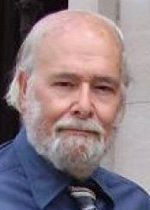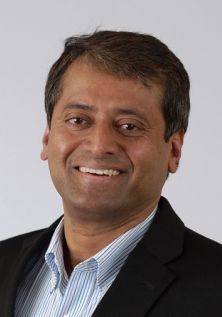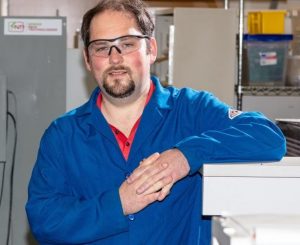Mr. Michael Pesin and Dr. Imre Gyuk of the U.S. Dept. of Energy’s Office of Electricity discuss the current and evolving state of research and implementation in energy storage technologies, including environmental and safety considerations
From a manufacturer’s perspective, Mr. Eric Gallant of GS Battery presents a case study of energy storage installations, emphasizing energy storage in terms of its impact on people’s lives, as well as changes in such related areas as evolving codes and standards.
The goal of the ESS program is to develop advanced energy storage technologies and systems, in collaboration with industry, academia, and government institutions that will increase the reliability, performance, and competitiveness of electricity generation and transmission in the electric grid and in standalone systems.
The DOE Energy Storage Systems program collaborates with industry, academia, and other government institutions to develop advanced energy storage technologies, demonstrate the effectiveness of storage technologies and analyze policy options that will increase the reliability, performance, and competitiveness of electricity generation and transmission in utility-tied and off-grid systems. The program goals include the education and dissemination of information on electrical energy storage systems by increasing the collective knowledge of energy storage systems, their operations, uses, benefits and potential issues.
ESS has been instrumental in the research & development of energy storage technologies and applications since the 1970s, especially as storage relates to electric utilities, renewables, and grid security.
Leadership
The DOE Energy Storage Systems program headed by Dr. Imre Gyuk in the DOE Office of Electricity.

After earning a bachelors’ degree from Fordham University, Dr. Gyuk performed graduate work at Brown University on superconductivity. Receiving a Ph.D. in theoretical physics from Purdue University, he became a research associate at Syracuse University. As an assistant professor, he taught physics, civil engineering, and environmental architecture at the University of Wisconsin. His research interests included the theory of elementary particles, metallurgy of non-stoichiometric alloys, non-linear groundwater flow, and architectural design using renewable energy and passive solar techniques. Dr. Gyuk became an associate professor in the Dept. of Physics at Kuwait University, where he became interested in issues of sustainability.
Dr. Gyuk joined the Dept. of Energy to manage the Thermal and Physical Storage program. He later managed DOE’s research on biological effects of electric and magnetic fields. For the past decade, he has directed the Energy Storage research program, which funds work on such technologies as advanced batteries, flywheels, super-capacitors, and compressed air energy storage. He also supervises the $185M stimulus funding for Grid Scale Energy Storage Demonstrations, developing a portfolio of field-tested storage technologies.

Dr. Babu Chalamala is Manager of the Energy Storage Technology and Systems Department at Sandia National Laboratories.
Prior to joining Sandia in August 2015, he was a Corporate Fellow at SunEdison (formerly MEMC Electronic Materials) for five years, where he led R&D and product development in grid scale energy storage. Before that, he founded two startup companies commercializing large format lithium batteries and digital x-ray sources. Earlier, as a research staff member at Motorola, Research Triangle Institute, and Texas Instruments, he made contribution to the development of electronic materials and device technologies. He received his B.Tech degree in Electronics and Communications Engineering from Sri Venkateswara University and his PhD degree in Physics from the University of North Texas. He is a Fellow of the IEEE and Academy of Sciences St Louis, a Life Member of the Electrochemical Society, and a Member of the Materials Research Society.
As chair of the IEEE Photonics Society Technical Committee on Displays, he was instrumental in launching the IEEE/OSA Journal of Display Technology. He has been an active member of the Materials Research Society for twenty years and served as General Chair of the 2006 MRS Fall Meeting. He was a guest editor of the MRS Bulletin, Proceedings of the IEEE, and the IEEE Journal on Selected Topics in Quantum Electronics, and served on the editorial boards of the Proceedings of the IEEE and IEEE Access. He received the 2015 James Eads Award of the Academy of Sciences St Louis.

PNNL
Dr. Vincent Sprenkle, Pacific Northwestern National Laboratory, highlighting key challenges and gaps in the current codes, standards, and regulations that impact energy storage safety.
Dr. Sprenkle joined PNNL in 2001 and is currently technical group manager for the Electrochemical Materials and Systems Group at PNNL, focusing on the development of electrochemical materials and systems for advanced energy storage and conversion applications. He is also project manager for the Dept. of Energy’s Office of Electricity Energy Storage Program at PNNL, focusing on the development of electrochemical energy storage technologies to enable renewable integration and improve grid support. He previously led projects in developing solid oxide fuel cell technology and planar Na batteries.
Before joining PNNL, he was a senior ceramic engineer at Litton Life Support and was responsible for the development of prototype advanced electrochemical oxygen-generating system. Dr. Sprenkle currently holds 14 patents on fuel cells, batteries, and high-temperature electrochemical devices with 17 current patent applications.

Michael Starke is the Energy Storage Program Manager at the Oak Ridge National Laboratory targeting the development of new energy storage technologies for the electric grid.
He has been at ORNL for over 10 years performing research in different areas of power systems analysis and systems integration. He received his B.S, M.S. and Ph.D. in electrical and computer engineering at The University of Tennessee in 2004, 2006, and 2009 respectively. He is a member of IEEE and of the Power and Energy Society with over 50 publications in power systems and power electronics. His research areas have been primarily focused on energy storage, load control, and microgrids but he has been actively engaged in wind and solar generation research as well. He has led a team that has successfully constructed a secondary use energy storage system composed of Nissan batteries for deployment with Habitat for Humanity and is involved in a number of energy storage deployment and development projects.
